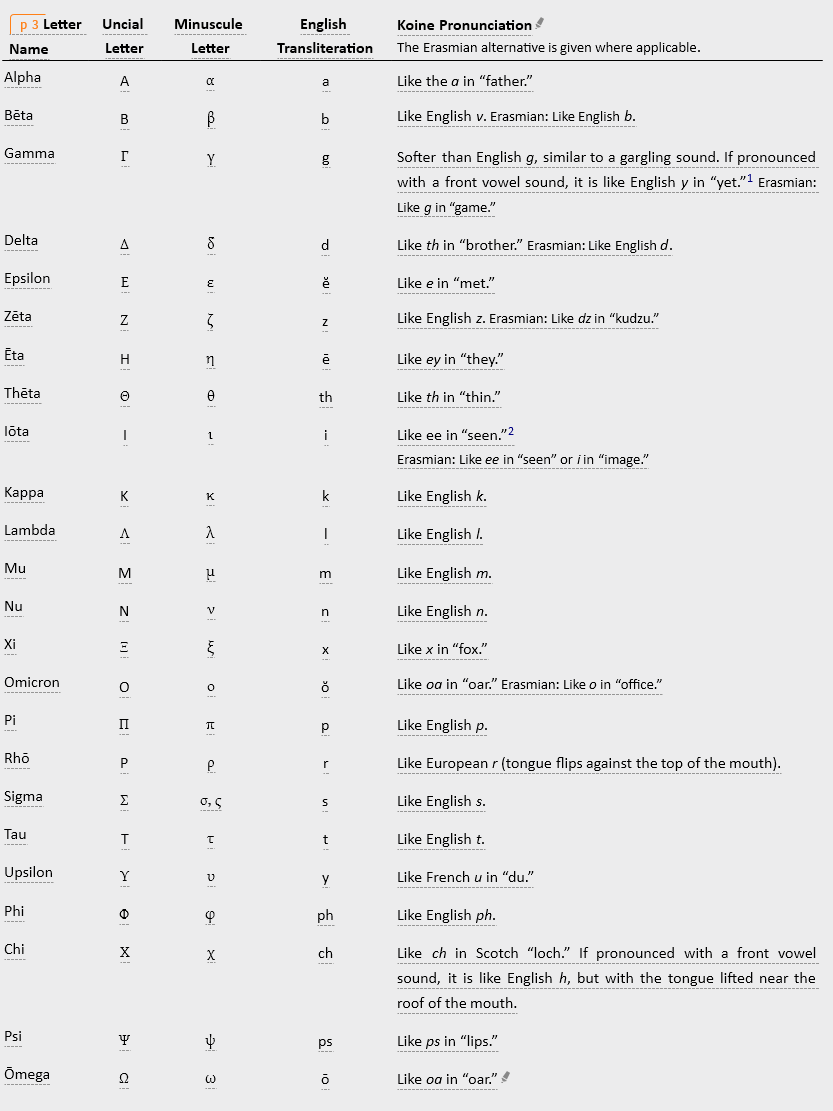“Erasmian” and “Koine” pronunciation
What are these two systems of Greek pronunciation?
John Schwandt explains the differences along with some historical background .
Erasmian
As the moniker suggests, this was formulated by Erasmus, famous among other things for his compilation of the Textus Receptus Greek text of the New Testament. Rather than defaulting to the current pronunciation of modern (Byzantine) Greek in his time, his aim was to recreate the sound of classical Greek as it was heard in Athens in the time of Socrates. ‘Erasmian’ subsequently was adapted to facilitate the learning of Greek in the English-speaking academy. Smyth exemplifies this approach.
Koine
Also known as “reconstructed” pronunciation, it is compiled from a study of misspelled words in the ancient texts of the period. Benjamin Kantor explains the process in this short video . His website has further details.
The Alphabet with Koine Pronunciation
From An Introduction to Biblical Greek: A Grammar with Exercises by John D. Schwandt, used with permission from the author.

Simple Summary of Differences
If you have learned Erasmian, this table shows you what changes to make in order to adopt Koine pronunciation
| Phoneme | Erasmian | Koine |
|---|---|---|
| β | ‘b’ as in ‘boy’ | ‘v’ as in ‘verity’ |
| γ | ‘g’ as in ‘good’ | softer gurgly ‘g’. ‘y’ as in ‘yet’ before ε,ι |
| δ | ‘d’ as in ‘do’ | ‘th’ as in ‘this’ |
| ζ | ‘dz’ as in ‘adze’ | ‘z’ as in ‘zoo’ |
| ι | long ‘ē’ or short ‘i’ | always long - ‘ē’ as in ‘keen’ |
| ο | long ‘ō’ or short ‘o’ | always long - ‘oa’ as in ‘board’ |
| αι | ‘ī’ as in ‘eye’ | ‘e’ as in ‘end’ |
| ει | ‘ā’ as in ‘eight’ | ‘ē’ as in ‘receive’ |
| οι | ‘oi’ as in ‘oink’ | ‘ü’ as in French ‘du’ |
| αυ | ‘ow’ as in ‘how’ | ‘av’ as in ‘bravo’ |
| ευ | ‘eu’ as in ‘sleuth’ | ‘ev’ as in ‘every’ |
- Interactive Pronunciation Guide
- Video walkthru of the Greek alphabet using Koine pronunciation .